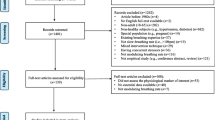Abstract
Statement of the problem
When conducting a treatment intervention study, it is assumed that a level of reliability can be obtained from the measurement tool such that the outcome can be reasonably assessed.
Purpose of study
Investigate the reliability of laboratory polysomnography, the gold standard for assessment of treatment outcomes for obstructive sleep apnea, at a 1-month interval.
Materials and Methods
In a clinical trial of 118 patients recruited to assess the effects of a pharmaceutical treatment intervention, a subset of 20 patients designated as placebo controls completed two polysomnography studies, one at baseline and one at least one month later.
Results
The correlation between the overall Apnea/Hypopnea indices from the two polysomnography (PSG) studies was poor (r = 0.44) and the results were biased, with a mean increase of seven events per hour on night 2. Twenty-five percent of the subjects had an increase greater than 20 events/hour on night 2 and only 45% of participants had a night-to-night difference of ≤5 events/hour. The correlation between overall apnea indexes for nights 1 and 2 (r = 0.61) was improved, compared to the overall apnea/hypopnea indexes. The correlation in sleep efficiency across the two nights was relatively week (r = 0.52) but significant. The correlations between nights 1 and 2 for the percentage of time supine (r = 0.70) and the supine apnea–hypopnea index (AHI) (r = 0.69) were similar and highly significant. The correlation for the non-supine AHI was only 0.25
Conclusions
In this study, the reliability of a single-night PSG in measuring treatment outcome was compromised as a result of the large night-to-night variability of subjects’ obstructive sleep apnea (OSA). Studies employing the AHI as an outcome need to be adequately powered with respect to the inherent night-to-night variability in the measurement. When assessing treatment intervention outcomes, there may be benefit from the acquisition and averaging of multiple nights of data in order to mitigate the inherent night-to-night variability of OSA and improve the accuracy of the outcome assessment.


Similar content being viewed by others
References
Flemons WW, Littner MR, Rowley JA, Gay P, Anderson WM, Hudgel DW, McEnvoy RD, Loube DI (2003) Home diagnosis of sleep apnea: a systematic review of the literature. An evidence review cosponsored by the American Academy of Sleep Medicine, the American College of Chest Physicians, and the American Thoracic Society. Chest 124(4):1535–1542
Kushida C, Morgenthaler T, Littner M, Alessi CA, Bailey D, Coleman JA Friedman L, Hirschkowitz M, Kapen S, Kramer M, Lee-Chiong T, Owens J, Pancer JP (2006) Practice parameters for the treatment of snoring and obstructive sleep apnea with oral appliances: an update for 2005. Sleep 29(2):240–243
Dement WC, Vaughan CC (1999) In: House R (ed) The promise of sleep: a pioneer in sleep medicine explores the vital connection between health, happiness, and a good night's sleep. Delacorte, New York
Healthy People 2010. 2000: US Department of Health and Human Services
Kripke DF, Ancoli-Israel S, Klauber MR, Wingard DL, Mason WJ, Mullaney DJ (1997) Prevalence of sleep-disordered breathing in ages 40–64 years: a population-based survey. Sleep 20(1):65–76
Norman RG, Pal I, Stewart C, Walsleben JA, Rapoport DM (2000) Interobserver agreement among sleep scorers from different centers in a large dataset. Sleep 23(7):901–908
Whitney CW, Gottlieb DJ, Redline S, Norman RG, Dodge RR, Shahar E, Surovec S, Nieto FJ (1998) Reliability of scoring respiratory disturbance indices and sleep staging. Sleep 21(7):749–757
Collop NA (2002) Scoring variability between polysomnography technologists in different sleep laboratories. Sleep Med 3(1):43–47
Cartwright RD (1984) Effect of sleep position on sleep apnea severity. Sleep 7(2):110–114
Kavey NB, Blitzer A, Gidro-Frank S, Korstanje K (1985) Sleeping position and sleep apnea syndrome. Am J Otolaryngol 6(5):373–377
Chediak AD, Acevedo-Crespo JC, Seiden DJ, Kim HH, Kiel MH (1996) Nightly variability in the indices of sleep-disordered breathing in men being evaluated for impotence with consecutive night polysomnograms. Sleep 19(7):589–592
Dean RJ, Chaudhary BA (1992) Negative polysomnogram in patients with obstructive sleep apnea syndrome. Chest 101(1):105–108
Le Bon OG, Hoffmann G, Tecco J, Staner L, Noseda A, Pelc I, Linkowski P (2000) Mild to moderate sleep respiratory events: one negative night may not be enough. Chest 118(2):353–359
Le Bon O, Verbanck P, Hoffmann G, Murphy JR, Staner L, De Groote D, Mampunza S, Dulk AD, Vacher C, Kornreich C, Pelc I (1997) Sleep in detoxified alcoholics: impairment of most standard sleep parameters and increased risk for sleep apnea, but not for myoclonias—a controlled study. J Stud Alcohol 58(1):30–36
Carlile J, Carlile N (2008) Repeat study of 149 patients suspected of having sleep apnea but with an AHI < 5. Sleep 31:A153
Author information
Authors and Affiliations
Corresponding author
Rights and permissions
About this article
Cite this article
Levendowski, D.J., Zack, N., Rao, S. et al. Assessment of the test–retest reliability of laboratory polysomnography. Sleep Breath 13, 163–167 (2009). https://doi.org/10.1007/s11325-008-0214-6
Received:
Revised:
Accepted:
Published:
Issue Date:
DOI: https://doi.org/10.1007/s11325-008-0214-6




